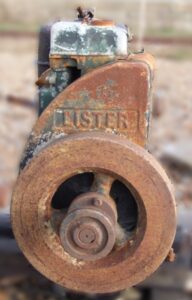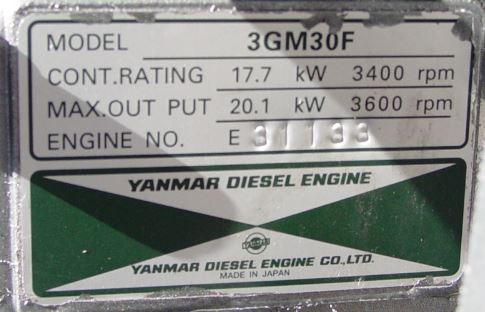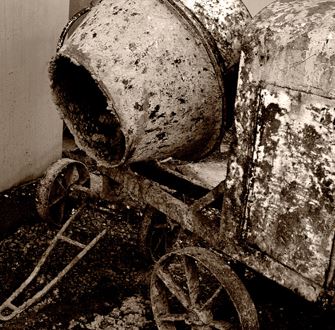
The age of a marine diesel engine has two distinct components; years since manufacture and hours of operation. Many marine diesel engines in sailboats today are upwards of 50 years old but have less than 5000 hours on the “clock”. A well maintained marine diesel installation on a sailboat can expect a long and reliable life.
What is the Life Expectancy of a Marine Diesel Engine?
A well-maintained marine diesel engine could be expected to last upwards of 10,000 hours of operation and can be reliably operated for more than 30 years.
Marine diesel engines are simple beasts – they generally run cool and pressures (oil, fuel etc) are kept low when compared to automotive engines. On boats, there is just not the same requirement for power-to-weight and fuel efficiency as there is in cars. This simplicity helps add years to their useful lifespan.


Maintenance, however, is everything. Oil must be changed regularly according to the users manual and a diesel engine must be run hard regularly to keep it healthy. Using the correct grade of oil is vital. Marine diesels do not like to be run at a constant revs for prolonged periods.
If you are running the engine in idle or motoring for more than an hour or so, be sure to vary the RPM and increase the engine speed occasionally up towards maximum. This is generally highlighted in operating manuals but few sailors adhere to it. Most engines specify their Maximum Output RPM (as shown) and it’s considered good practice to approach that speed regularly for a short burst.

A good rule of thumb is one Italian Tune-up every ten hours of operation. This is revving the engine to within 200rpm of maximum RPM for ten minutes. Doing this heats up the cylinders to burn off soot and remove any oil glaze that is forming. Glazing occurs when there is not enough pressure on the piston rings to seal them. Oil can eventually be sucked up from the crankcase and combustion gasses blow down past the rings. Unburned diesel fuel accumulates on the cold cylinder walls and forms a polymer like substance. Using modern synthetic oils in old diesel engines can make the problem worse. When this glazing occurs the rings will no longer seal and engine life is irreparably impacted. Don’t panic – it can take hundreds of hours of near idle operation to cause glazing but, that said, it has ruined many good boat engines.
Why Do Marine Diesel Engines Last Longer than Automotive Engines?
Marine Diesel engines are generally marinised versions of industrial stationary engines which are designed to run equipment all day long – forklift trucks, cement mixers, sawmills and so on. These engines would be expected to run for ten hours a day, six days a week for, say, ten years. That’s 30,000 hours.
Many industrial machines lasts much longer than this. And they’re usually not cared for very much. So, while running an engine in a saltwater environment presents its own set of challenges, the base engine should certainly be up to the task of running for 10,000 hours of operation.

How to Compare Hours on a Marine Diesel Engine to Miles in an Automotive Engine
Marine (and industrial and agricultural etc) engines log hours while automotive engines log distance. As most of us are familiar with cars, it is natural to compare our sailboat engines with our automobiles. With the most basic maintenance, most cars will give in excess of 100,000 miles (160,000 km) of trouble free operation. With regular oil changes and other consumables such as filters and belts changed as directed by the manufacturer, you could achieve much more.
So, let’s consider 150,000 miles. If a car travels at an average speed of 20 mph, then your car engine would be running for 7,500 hours. Many do much more.


When should I Rebuild my Marine Diesel Engine?
Although small marine diesels are typically very reliable, issues do arise from time to time. Depending on the problem, you might begin thinking about a rebuild or a replacement. So when is it time to rebuild?
What is a rebuild?
A rebuild of your sailboat’s diesel engine is when you, or your mechanic disassembles the engine. The component parts are inspected and cleaned. Any parts that are damaged or excessively worn will be replaced with new or refurbished parts. This will at least involve removing the cylinder head from the block. Some owners will complete the rebuild with the engine still in the boat. Others remove the engine and bring it to a workshop.
Signs that you might need a rebuild will include;
- The engine is producing excessive black or blue smoke
- There are unusual rattles or other sounds from the engine during operation – before rebuilding: are the sounds definitely coming from inside the engine?
- The engine cannot maintain oil pressure and the alarm is sounding
- The engine is very hard to start, or can not be started – before rebuilding: have you checked your fuel delivery, starter motor and starting battery voltage levels?
- The engine is overheating and the alarm is sounding – before rebuilding: have you checked your impeller and coolant water system?
